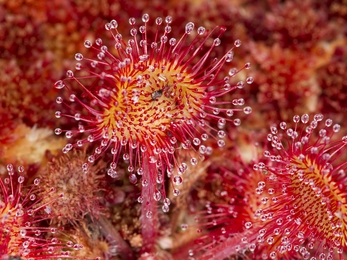The 'Grimston Wetscapes’ project saw us carry out incredible restorations of parts of Roydon Common and Tony Hallatt Memorial Reserve, thanks to £210,350 from the FCC Communities Foundation as part of the Landfill Communities Fund. Both sites form part of a huge area of globally important wildlife habitats, including wetlands, woodlands and heathland.
Together, these sites represent one of the most important lowland wetland and heath landscapes in the UK. The sites support an incredibly diverse range of plant and insect life, including many species that are rare or threatened in the UK. Historically, these sites would have formed part of a vast chain of wetlands, but due to drainage, afforestation and development, almost all of these have now been lost.







